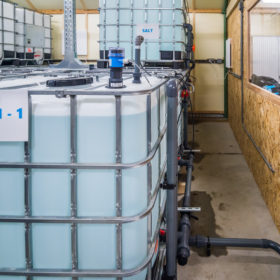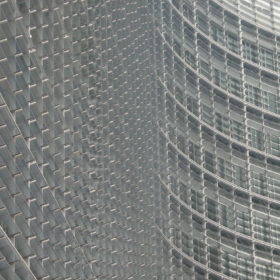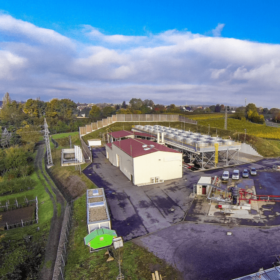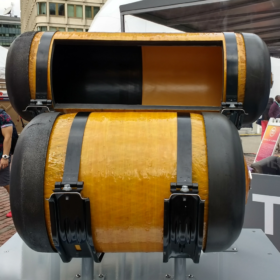Energy Vault signs deal with India for gravity-based energy storage
Switzerland’s Energy Vault will support Indian state-run power producer NTPC by deploying its gravity-based energy storage technology and software solutions.
France defines standards for agrivoltaics
France’s environmental agency Ademe has released a set of new guidelines that clearly define “agrivoltaics.”
Long-duration storage solution based on saltwater
Developed by Dutch start-up AquaBattery, the storage technology is claimed to independently amend power and energy capacity. The battery system utilises three storage tanks, one with fresh water, one with concentrated salt water and one with diluted salt water, and also relies on membrane stacks.
European Commission could call in Australian investor Macquarie’s bid for French developer
Australia’s Macquarie is leading a consortium that has reportedly tabled a €2.5 billion ($3.65 billion) bid for a clean energy business formed by French private equity houses InfraVia and Eurazeo.
Molecular thermal energy system can store solar energy for 18 years
Developed by a Chinese-Swedish research group, the device is an ultra-thin chip that could be integrated into electronics such as headphones, smartwatches and telephones. It combines a Molecular Solar Thermal Energy Storage System (MOST) with a micro-fabricated system that includes a thermoelectric generator (TEG) with a low-dimensional material-based microelectromechanical system (MEMS).
Reinhart-backed WA company to supply Germany with geothermal heat before turning to lithium extraction
West Australian company Vulcan Energy Resources, backed by mining magnate Gina Rinehart, has signed a geothermal heat energy offtake agreement with a major German energy supplier, MVV Energie. Vulcan is planning to eventually secure a lithium supply from the same deep brine source in the Upper Rhine Valley, Germany.
CO2 battery long-duration energy storage technology wins BNEF Pioneers 2022 competition
Energy Dome’s emission-free energy storage method uses carbon dioxide in a closed loop charge/discharge cycle that can store and dispatch renewable energy onto the grid over periods from four to 24 hours.
UK government warns of global warming risks related to hydrogen leaks
The UK Department for Business, Energy and Industrial Strategy has published new research showing that hydrogen leaks could have an indirect climate-warming impact, partly offsetting efforts to reduce carbon dioxide emissions.
Bosch unveils hydrogen-compatible stationary fuel cell system
Bosch’s new solid oxide fuel cell prototype has an electrical efficiency of more than 60% and an overall efficiency above 85%. It also has a targeted power output of 10 kW and can produce up to 3 kW of thermal energy.
Lightweight solar for agricultural water reservoirs
The Genap Energy Cover uses HyET Solar Powerfoil thin-film solar modules, rated at 12.0% efficiency, for agricultural water storage and reservoirs, with an initial focus on the greenhouse and horticulture markets in the Netherlands. Genap said a 12kWp test setup had a generation density of 60W/m2, rising to 120W/m2 within a year, with an eventual target of 165W/m2.















